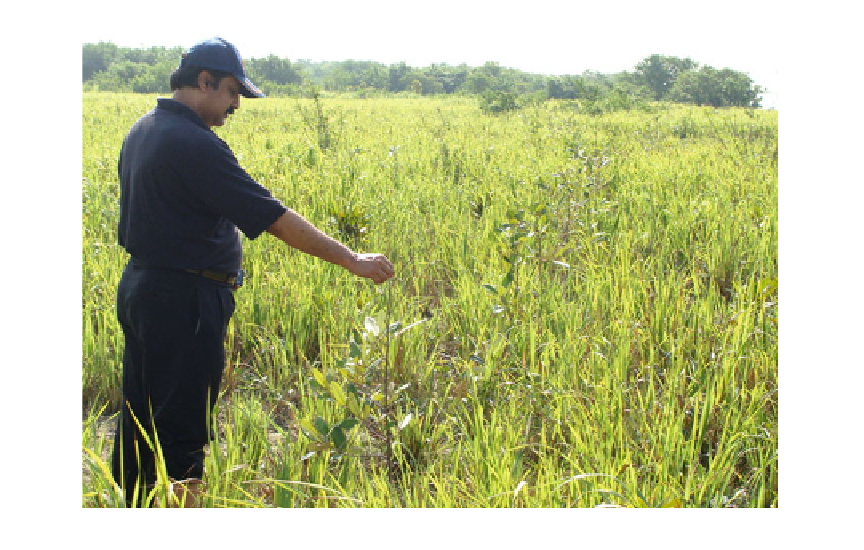Environmental Engineering Reference
In-Depth Information
Fig. 2.14
View of Porteresia coarctata with few mangrove seedlings
pioneer species in the process of ecological
succession. Studies carried out by researchers
showed that salinity has a regulatory in
lily family. Salt marsh grass such as
Porteresia
coarctata
is under family Poaceae.
Scientists have identi
fl
uence on
ed four habitats where
seagrasses and salt marsh grasses can grow along
the coast. Different factors regulate their growth
and survival in these highly delicate and vul-
nerable (to physical processes such as waves,
tides, storms, high water) coastal habitats.
1.
River estuaries
are dominated by run-off
(e.g. in Queensland, run-off is infrequent and
on a massive scale) from the land that carries
freshwater, sediment and nutrient
the biomass and carbon content of
P. coarctata
.
P
.
coarctata
Tateoka (=
O. coarctata
) is a tetra-
ploid (2
= 48) monotypic genus occurring
as a halophyte, distributed along the coastal
mangrove belt of India and Bangladesh. Taxo-
nomically Tateoka (
1965
) classi
n
=4
x
ed
O. coarctata
as
based on morphological and
embryo anatomy. The plant contains useful traits
including salt and submergence tolerance, pe-
renniality,
P. coarctata
into the
short
internodal
length conferring
ocean. Run-off can produce
'
that extend many kilometres from the coast
and affect large areas. The examples of estu-
aries in the Ganges, Brahmaputra and Meghna
basins are important in this context
(Fig.
2.15
), where salt marsh grasses are
widely available. A comparative account of
these three important basins is presented in
Table
2.7
. The estuaries of these basins are
mostly connected with Himalayan glaciers
due which many of them receive freshwater
along with sediment load. Nutrient overload-
ing is also an important issue in many of these
estuaries, particularly the estuaries of
'
fl
ood-plumes
mechanical
strength, all of which are little
studied.
The salt marsh is one of the most productive
ecosystems in nature and serves as a sediment
sink, a nursery habitat for
sh
species, a feeding and nesting site for waterfowl
and shorebirds, a habitat for numerous unique
plants and animals, a nutrient source, a reservoir
for storm water, an important erosion control
component, and a site for aesthetic pleasures.
Seagrasses are monocotyledon that are not
true grasses (true grasses belong to the family of
Poaceae) (Fig.
2.14
), but more closely related to
n
sh and shell
the

